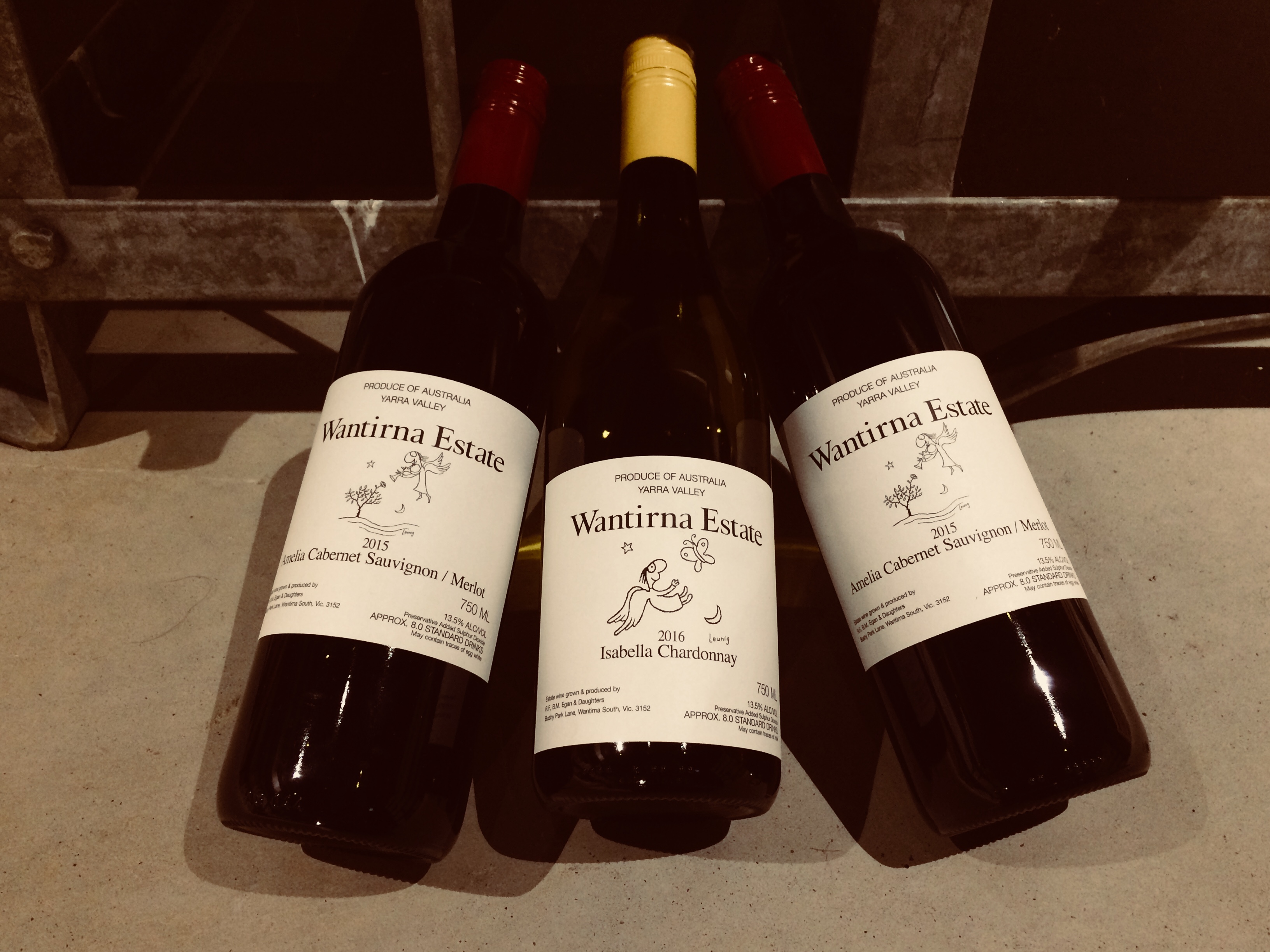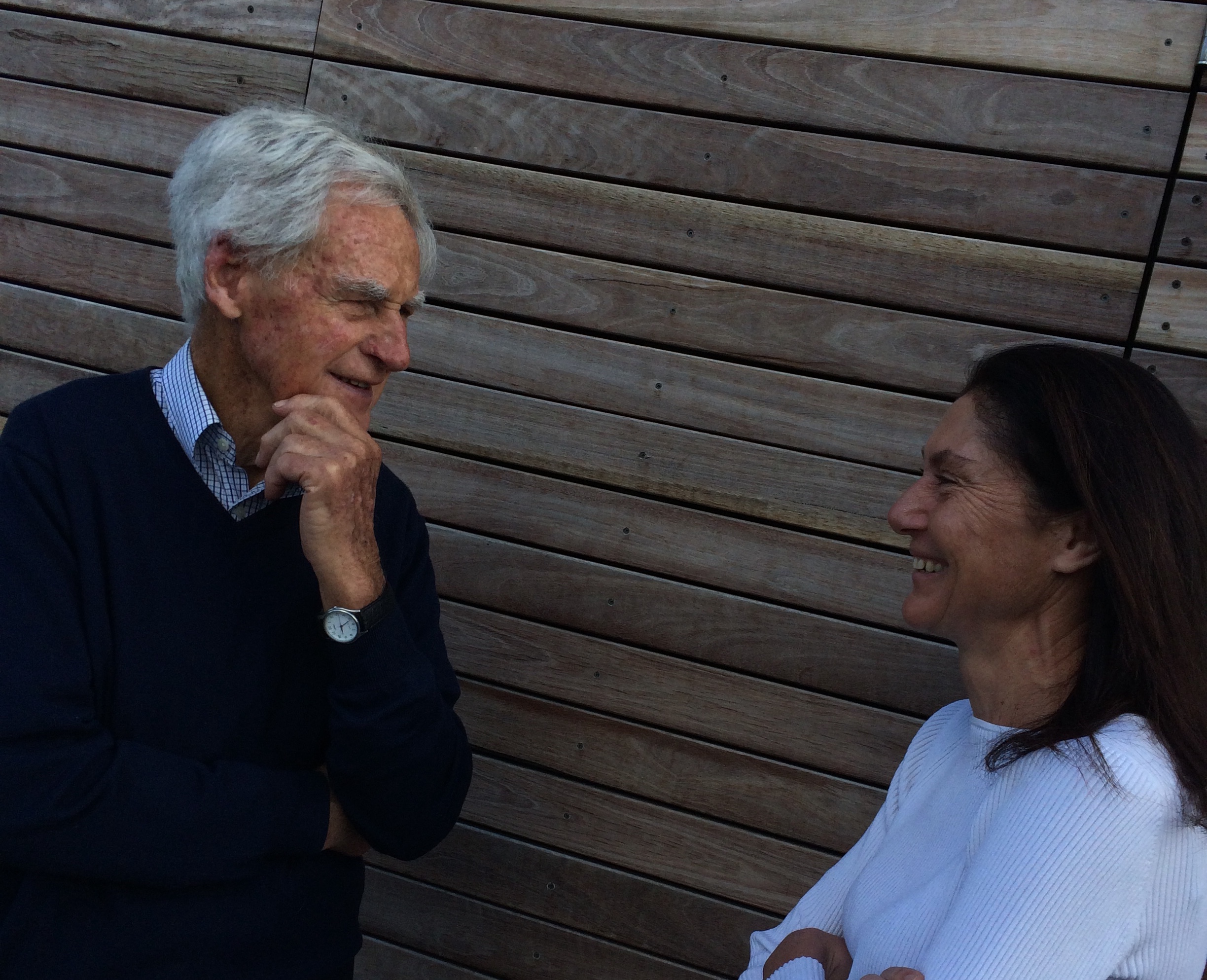 It was a bumper crop, 2016 at Wantirna Estate. Yep, eight whole barriques of Chardonnay.
It was a bumper crop, 2016 at Wantirna Estate. Yep, eight whole barriques of Chardonnay.
Its grand reputation might make one forget how intimate this place is. Wantirna Estate is as up-close and personal as wine-growing gets: ten tranquil acres arrayed across the garden, grape press on the patio, Reg Egan up at night to plunge the Pinot, and daughter Maryann chivvying the “uni-student” third-generation to do the grunt work. (At least they got a nice wine named after them). The wines are rare but not haughty or aloof in the slightest. They make no grandiose claims at all, actually. They just are – and happen to be beautiful with it.
“Many things are teachable; charm not so much,” Campbell Mattinson of The Wine Front was moved to write when tasting the Pinot. “It’s a pretty wine but not in a breezy way; it has its own style, and substance.” Like the Egan family, then – endearing and genuine. “I wouldn’t hesitate,” Mattinson writes about hooking into the Chardonnay. “Lean this certainly is not. And yet it boasts the cut and sparkle of quartz.” Maryann Egan reckons the ’15 Amelia is one of the finest renditions of the famed Bordeaux blend to be raised on what Mattinson calls “this beautiful, and unique, Yarra Valley vineyard.” The latter goes on to extol “the balance, the grace, the unhurried feel” – again, you’d have to say that these are prime virtues of Wantirna Estate and the family behind it. Rounding out the range we have Hannah, the single-barrel Cabernet Franc/Merlot blend that has become a singular classic of the Australian wine landscape.
The release is split, as is traditional, between two harvests: 2016 for the Burgundy varieties, 2015 for the Bordeaux blends. An impeccable quartet, as always, from one of the nicest families you could wish to meet. We are, as always, honoured to offer this intimate pleasure.
THE WINES
2016 Wantirna Estate Isabella Chardonnay RRP $81
The warm 2015 spring had the vines flowering in late October, ensuring that vintage 2016 started on 19th February – pretty early! But the summer had been kind and devoid of any long-lasting heat spikes, so the Chardonnay fruit was in terrific condition, and even a tiny bit more plentiful than the previous couple of years.
At the CellarHand annual trade day we showed this wine and were asked many times about the winemaking. The most common question was how we’d retained the beautiful fruit but still had some lovely mid palate weight? I’d say mostly that the wine is a reflection of the vineyard as our treatment of the grapes is light-handed. The whole bunches are picked by hand then destemmed straight to the airbag press. After settling the juice off the heaviest of lees, the wine begins fermentation in tank before being transferred to barrel for the majority of the fermentation process. About 25% new French oak is used, the rest a mixture of older barrels. The wine then ages on the lees, but without stirring. The 2016 had 25% malolactic fermentation, an amount that varies each year depending on the naturally occurring malic acid levels. True to our style, the 2016 Isabella is already drinking well, but will certainly age gracefully. – Maryann Egan
The Chardonnay vines are over 40 years old at Wantirna Estate. They know what they’re about.
Straw-yellow in colour and carrying a resounding burst of flavour. Lean this certainly is not. And yet it boasts the cut and sparkle of quartz. Stonefruit, grilled nuts, sweet cedar and spice. There’s a bran-like character here too, a certain mealiness. The finish has appreciable length. It warrants the word gravitas. I wouldn’t hesitate. 94 points. Campbell Mattinson, The Wine Front October 2017
2016 Wantirna Estate Lily Pinot Noir RRP $81
On our small 10 acres we have three blocks of Pinot Noir. Each gives us different flavours and composition – one block is fruity; the old original block gives us tannin and structure and the front block develops a spicy character.
In 2016 we decided to try to get just a little more mid-palate weight to the Lily. Not to make a bigger wine, rather a wine with a touch more complexity. So instead of pressing the wine off its skins straight after ferment, we wrapped up the small concrete open fermenter for a few days. We felt that this extended skin maceration would bridge that little gap from the fruit-filled mid-palate to the dry, powdery-tannin finish. Again it’s a small fiddle but one that we are really excited by. The resulting barrel and a half has given the final blend something a little more, and as it’s but a small component the wine hasn’t strayed from the Wantirna Estate style.
Other than this variation we’ve kept the winemaking as per normal – open-tank fermentation, hand-plunging with some pumpovers, followed by 10 months ageing in the cool, semi-underground cellar, with just one racking before bottling. – Maryann Egan
The charm-factor of this 2016 release of Lily Pinot Noir is right up there. Many things are teachable; charm not so much.
A complex nose. A silken palate. An even slide of flavour through the finish. And just enough scaffolding to suggest longevity. This is a 2016 pinot noir made with a gentle hand. A wise wine. Cherries, plums, cream, an assortment of blooms, fennel root, a hint of forest floor. It’s a pretty wine but not in a breezy way; it has its own style, and substance. 93+ points. Campbell Mattinson, The Wine Front October 2017

2015 Wantirna Estate Amelia Cabernet Sauvignon / Merlot RRP $81
2015 has been lauded as one of the top vintages in the Yarra Valley this decade – however, it’s fair to say that really we have had a string of terrific vintages and we may have heard ‘vintage of the decade’ being thrown liberally around.
But while 2015 was earlier than usual, it was a mild summer so the grapes still ripened at their normal rate, without any damage from excessive heat. Merlot was harvested on 10th March and we began the Cabernet on 17th March. Vintage was finished with the Petit Verdot on 23rd March. Even in the “new normal” of earlier harvest dates, this was surprising.
Flicking back through the notes in our analysis book there are little scribblings from Reg as to the fantastic aromas that filled the fermentation area every morning. The fruit was just so fragrant yet still with that savoury character that keeps the wine from being simply fruity.
And every year the composition of the Amelia blend is a little different. The 2015 saw a pretty even proportion of the Cabernet Sauvignon and Merlot / Cabernet Franc grapes – around 45% each. Making up the balance is the Petit Verdot, which we really do love. It is fruity yet tannic, with quite a power of flavour. It also tends to ferment a little slower, rarely needing any refrigeration to help control the temperature. Mostly it takes at least five days longer to finish fermenting than the other red varieties so we see some of that lovely extended skin contact character, giving the silky fine tannins. I often think we could make a single-variety wine from the Petit Verdot but then we would rob the Amelia blend too much! The 2015 is perhaps one of our best Amelias… – Maryann Egan
A true Bordeaux blend, with Cabernet Sauvignon as the driver. Made mostly from vines planted in 1963 on this beautiful, and unique, Yarra Valley vineyard.
Composure is an underrated virtue. The balance, the grace, the unhurried feel; the cool, dripping juiciness, like cutting into a succulent after a burst of summer rain. This is all mint and boysenberry, cocoa and blackcurrant, mid-weight at most but with an even, flowing feel, like evening wear, light, perfectly tailored. It has charm galore, of course, and the more you look the more intricate its pattern seems. A delight of a wine. Timeless. 95+ points. Campbell Mattinson, The Wine Front October 2017
2015 Wantirna Estate Hannah Cabernet Franc / Merlot RRP $146
The wine is inspired by the beautiful wines of Saint-Émilion, in particular Château Cheval Blanc. The intriguing fragrance and the elegant weight of these varieties make it a wine to linger over. First made by Wantirna Estate in 1999, the ageworthiness of the wine is becoming more and more evident. Many years ago when Reg spent time wandering the vineyards of France and Italy, he saw the wineries making use of concrete fermenters that had been given either a wax or epoxy layer. Others used stainless steel, some wood. Here at Wantirna we use both concrete and stainless and can now look back and understand the popularity of the concrete – it does give the wine something intangible; the ferments from this vessel are always just special.
As mentioned, the 2015 was rather a gorgeous vintage. The Hannah shows more fruit than the Amelia Cabernet Merlot as we bottle this wine after just 12 months in barrel, specifically to capture this brightness of fruit. The Hannah ages beautifully and a tasting of these wines recently showed the early 2000s looking really lovely. – Maryann Egan